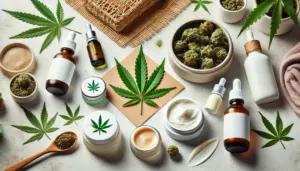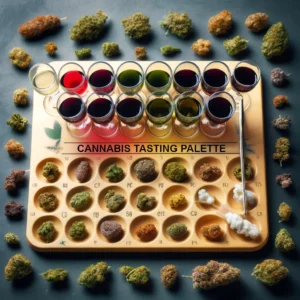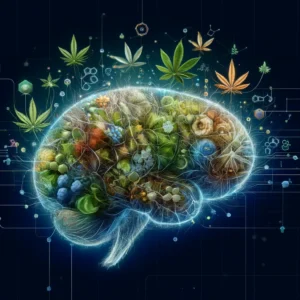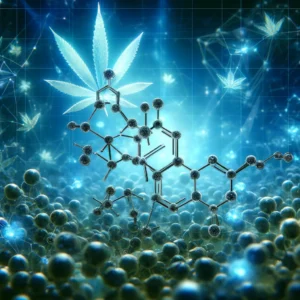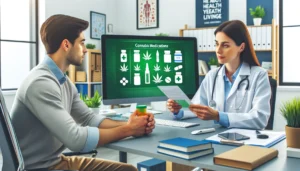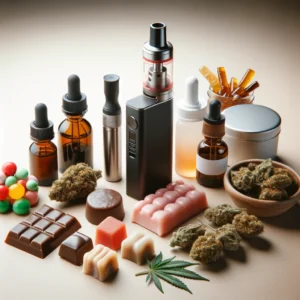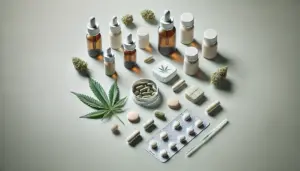 In recent years, microdosing has gained traction as a way to experience the benefits of cannabis without the psychoactive intensity that higher doses bring. The concept of microdosing, already popular in the world of psychedelics, involves consuming very small, controlled amounts of cannabis to achieve therapeutic effects while minimizing unwanted side effects. But how exactly does microdosing work, and is it effective?
In recent years, microdosing has gained traction as a way to experience the benefits of cannabis without the psychoactive intensity that higher doses bring. The concept of microdosing, already popular in the world of psychedelics, involves consuming very small, controlled amounts of cannabis to achieve therapeutic effects while minimizing unwanted side effects. But how exactly does microdosing work, and is it effective?
What is Microdosing?
At its core, microdosing refers to taking very small, sub-perceptual doses of a substance—usually a fraction of a standard dose. When it comes to cannabis, this involves consuming low amounts of THC (or sometimes CBD) to achieve a subtle effect that enhances well-being without causing intoxication.
A microdose typically ranges between 1 to 5 mg of THC per dose, though the optimal amount can vary depending on an individual’s tolerance, metabolism, and desired effects.
How Does Microdosing with Cannabis Work?
Cannabis interacts with the endocannabinoid system (ECS), a complex signaling network involved in maintaining balance within the body. Cannabinoids like THC and CBD bind to receptors in this system—specifically CB1 and CB2 receptors—to influence everything from mood to pain perception.
- CB1 receptors, primarily located in the brain, are responsible for the psychoactive effects of THC. At very low doses, however, the stimulation of these receptors can provide mild therapeutic benefits without producing euphoria or intoxication.
- CBD, on the other hand, modulates the effects of THC and interacts with non-cannabinoid receptors, offering anti-inflammatory and anti-anxiety benefits.
The Benefits of Microdosing Cannabis
- Anxiety and Stress Management
Microdosing has shown promise for individuals looking to manage mild anxiety or stress. Traditional doses of THC can sometimes exacerbate anxiety, but lower doses may reduce stress without impairing cognitive function or causing paranoia. - Pain Relief
For those managing chronic pain, microdoses of cannabis may offer relief by reducing inflammation and modulating pain signals. While not as potent as higher doses, microdosing can still provide subtle improvements in pain levels over time. - Enhanced Focus and Creativity
Many users report that microdoses improve focus and mental clarity, in contrast to the cognitive fog sometimes caused by standard doses of THC. This makes microdosing appealing to individuals seeking a boost in creativity or productivity without feeling high. - Sleep Support
Microdosing cannabis—particularly in the evening—can promote better sleep quality without causing the grogginess or lethargy associated with larger doses. Some users find that CBD-rich microdoses help them relax and fall asleep more easily.
How to Microdose with Cannabis
There are several methods for microdosing cannabis, each offering a different experience. The key to effective microdosing is consistency—it may take time to find the right dose that provides the desired effects without unwanted side effects.
- Edibles
Microdosing with edibles, such as gummies or capsules, provides precise dosing but requires patience, as effects can take up to 1-2 hours to onset. Many cannabis products now offer low-dose options with as little as 2.5 mg of THC per serving. - Tinctures and Oils
Tinctures provide another reliable way to microdose cannabis. By placing drops under the tongue, users can feel the effects more quickly than with edibles, typically within 20-30 minutes. This method also allows for precise control over the dose. - Vaporizers and Inhalation
Microdosing through vaporization provides rapid onset of effects, usually within minutes. This method is ideal for users looking for immediate relief from anxiety or pain. However, achieving precise dosing through inhalation can be more challenging. - Topicals
While topical cannabis products (creams or balms) don’t typically cause systemic effects, some microdose by applying small amounts of transdermal patches, which release cannabinoids slowly into the bloodstream over time.
Finding the Right Dose: Start Low and Go Slow
The process of microdosing is highly individualized. What works for one person may not work for another, so it’s essential to start with the lowest possible dose and gradually increase as needed. Keep a journal to track your experiences—note the time of consumption, the dose, and the effects you feel.
Does Microdosing Cannabis Work?
While much of the evidence around microdosing remains anecdotal, there are scientific reasons to believe that low doses can provide meaningful benefits. THC has a biphasic effect, meaning that low and high doses can have opposite outcomes—a small dose may reduce anxiety, while a larger dose might increase it. Similarly, microdosing may improve mood and focus, while excessive use may impair cognitive function.
However, more clinical research is needed to fully understand the benefits and limitations of microdosing. Most existing studies have focused on larger, recreational doses of THC, leaving a gap in our understanding of how smaller doses work over time.
The Limitations of Microdosing Cannabis
Microdosing isn’t for everyone, and there are some limitations to consider:
- Tolerance Development: Regular cannabis use, even in small amounts, can lead to tolerance over time, requiring higher doses to achieve the same effect.
- Regulatory Challenges: Cannabis laws vary widely, and access to low-dose products may be limited depending on where you live.
- Inconsistent Results: Some users may find that microdosing doesn’t provide the desired effects, particularly for more severe conditions requiring higher doses.
Is Microdosing Right for You?
Microdosing offers a way to explore the therapeutic benefits of cannabis without the high that comes with standard doses. For individuals seeking relief from anxiety, pain, or sleep disturbances—or for those simply looking to enhance focus and well-being—microdosing could be a viable strategy. However, it’s important to experiment cautiously and consult with a healthcare provider if you’re new to cannabis or managing a medical condition.
Takeaways: A Thoughtful Approach to Microdosing Cannabis
Microdosing cannabis provides a nuanced way to experience the benefits of cannabinoids without overwhelming side effects. By starting with small doses and adjusting gradually, users can find the right balance for their needs. Whether you’re seeking relief from stress, improved focus, or better sleep, microdosing allows for a more controlled, mindful experience with cannabis.
As always, consult with a healthcare provider before starting any new cannabis regimen, and be patient as you explore what works best for you.

